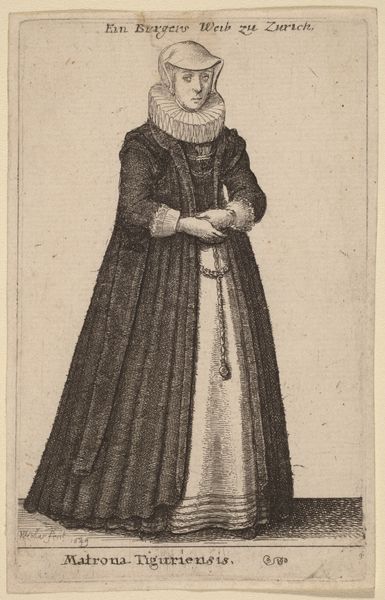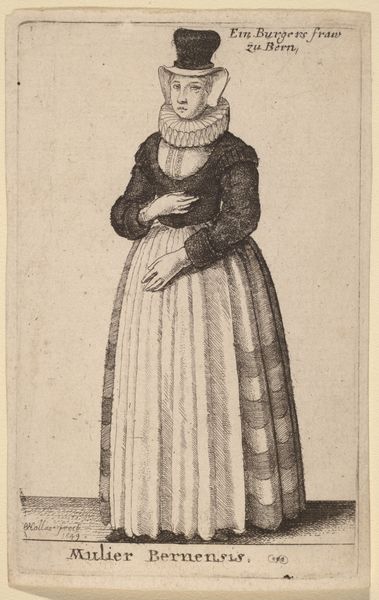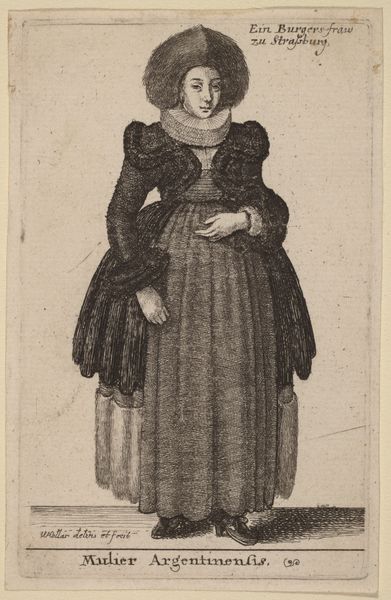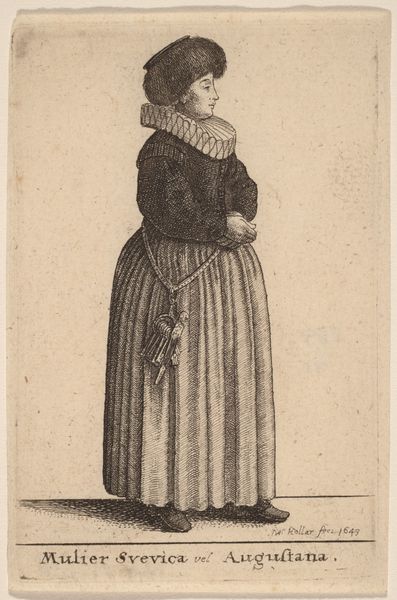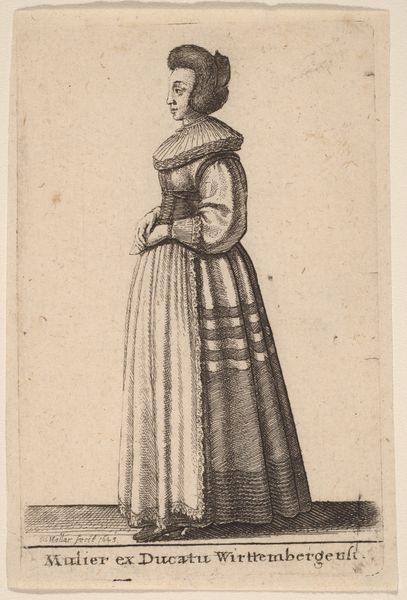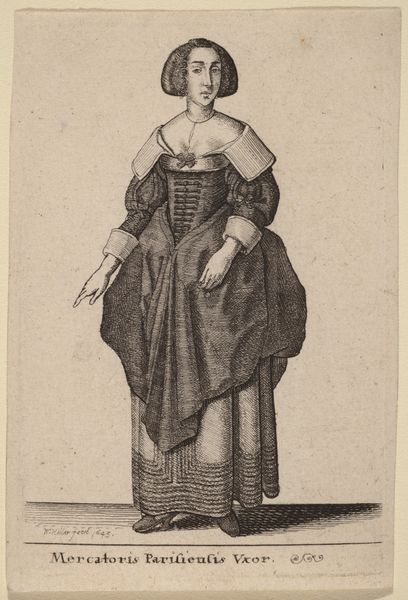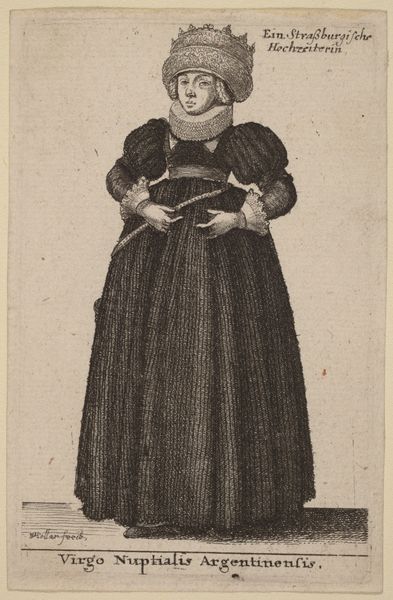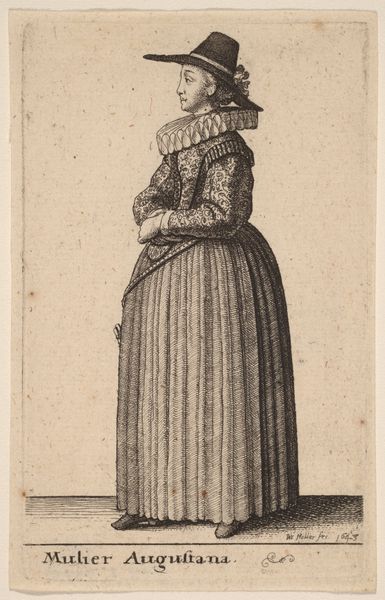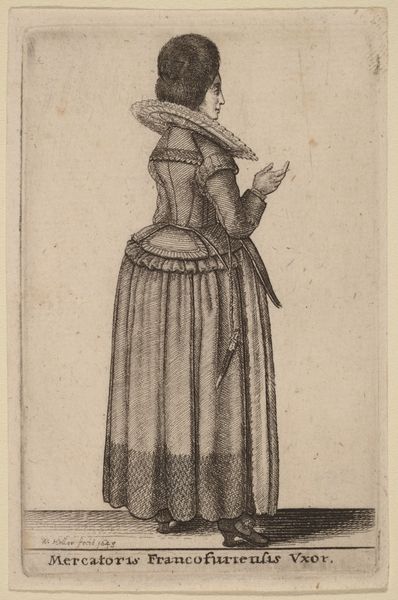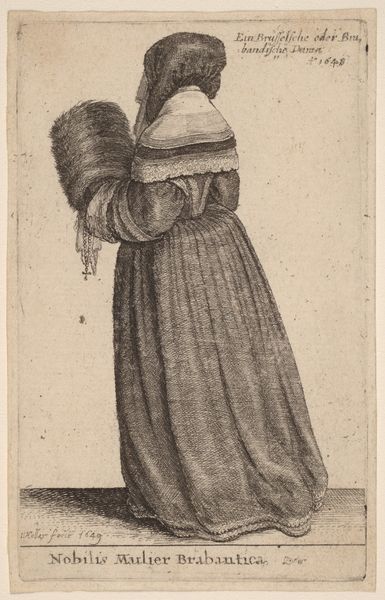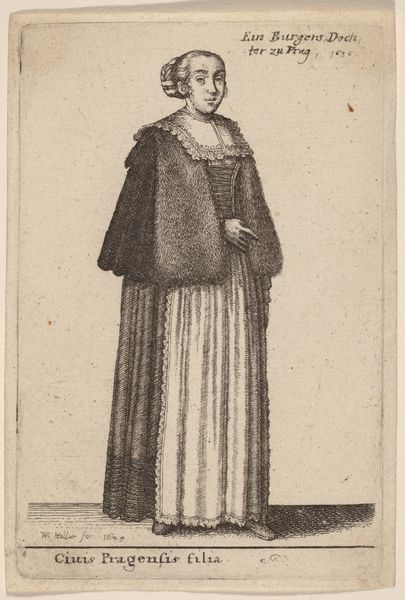
print, engraving
#
portrait
#
baroque
# print
#
history-painting
#
engraving
Copyright: National Gallery of Art: CC0 1.0
Wenceslaus Hollar created this engraving, "Virgo Nuptialis Tiguriensis," in 1649, capturing a bride from Zurich. The process of engraving itself is critical here. Hollar meticulously incised lines into a metal plate, likely copper, to hold ink and then transfer the image onto paper. This was a labor-intensive method, demanding precision and skill, mirroring the craftsmanship evident in the bride’s attire. Look at the ruff around her neck, the intricate lace, and the embroidery—all indicative of specialized labor, and expensive materials. Her clothing isn’t just functional; it’s a display of wealth and social standing. Hollar's print makes you think about the networks of production and consumption behind this image. It serves as a reminder that even seemingly simple artworks can be deeply embedded in the social and economic structures of their time. It encourages us to recognize the value of craft and labor, and to question traditional hierarchies within art history.
Comments
No comments
Be the first to comment and join the conversation on the ultimate creative platform.
